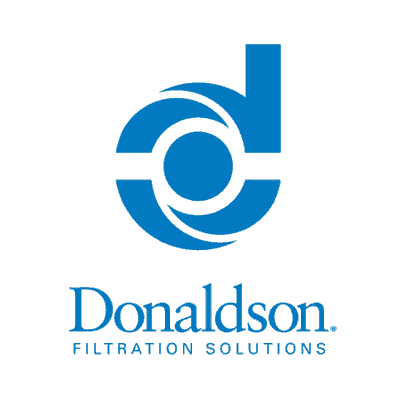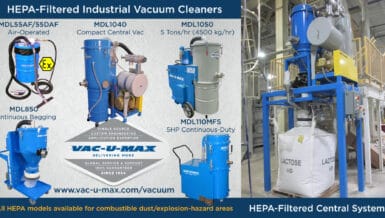After recently completing 12 compressed air efficiency projects at its facilities, Donaldson’s annual energy demand has been reduced by an incredible 496 MWh – approximately the same amount needed to power 220 electric cars for a year or for almost 2400 round trips between Land’s End and John o’ Groats.
As a leading supplier of filters that reduce contamination from the moment air enters a compressor through to its point of use, the company enjoys obvious advantages when identifying where efficiencies can be made. But if an expert in the field is able to realize major savings in its own operations, imagine the possibilities that non-specialists, that rely heavily on compressed air, could unlock.
Generating compressed air accounts for up to 30% of a plant’s electricity costs, according to the U.S. Dept. of Energy (DOE), but fortunately this can be influenced in a direct way. The onus is firmly on stopping leaks and the use of high-quality filters and components specifically designed to deliver the highest performance with the lowest pressure losses.
Savings scheme
With innovative filter media and flow-optimized filter housings, energy-saving potentials can be realized. So, with hundreds of thousands of filters in use worldwide to generate the high compressed air quality required by ISO 8573-1:2010, the potential for reducing CO2 pollution and creating financial savings is huge.
Running a compressor with minimized energy consumption requires three distinct quality filters to work in harmony, filtering particulates and separating oil mist from the airstream without being too restrictive for air moving through the system.
Inlet air filters benefit from Donaldson’s Ultra-Web® fine fiber technology that can provide efficiencies of 99.99 percent and a superior dust surface loading with a low pressure drop, contributing to energy savings.

Donaldson’s advanced oil filters, featuring resin-free Synteq XP™ technology, efficiently trap contaminants to deliver superior performance. The air-oil separator, also using Synteq XP™ coalescing media, ensures extended life, low pressure drop and considerable energy savings compared to standard media, while helping to meet oil carryover requirements. This contributes to reduced overall Total Cost of Ownership (TCO).
Following its departure from the compressor, the compressed air typically undergoes a series of treatment stages before reaching its point of use. Here, the advanced design of Donaldson’s UltraPleat™ filtration technology optimizes compressed air treatment, utilizing coated high-tech fibers to create a pleated filter medium. This structure supports exceptional separation efficiency for liquid and solid particles, boasting a surface area over 400% larger than traditional media. The filter attains an oil aerosol separation efficiency of ≥99.9% according to ISO standards, while concurrently cutting the differential pressure by 50%.
An illustrative calculation exemplifies the significant economic benefits of this technology: a 300 mbar reduction in differential pressure over 8,000 operating hours translates to approximately £5,650 in savings per UltraPleat filter annually (considering 7 bar system pressure, 110 kW installed compressor power, and a cost of 0.21p/kWh).

The efficiency of UltraPleat technology can be maximized by flow-optimized filter housings, combined with continuous monitoring through an economizer. This monitoring system not only indicates the most economical replacement time for the filter but also provides data for higher-level control of compressed air systems.
For applications with larger compressed air volume flows, UltraPleat filters are fully optimized while remaining scalable. This ensures a prolonged service life with consistently low differential pressure, a vital factor for achieving energy savings.
UltrapacTM Smart adsorption dryer technology incorporates UltraPleat filters too, along with capacity control and compressor couplings that contribute to substantial savings in regeneration air. Additionally, energy-efficient alternatives in dryer technology comprise prefilters equipped with electronic, level-controlled drains, intermittent operation standards, zero purge technology, and energy-saving control systems such as Ultraconomy.
Stop the leaks
But even the very best filter technology can’t generate miracles. Pipe connections, conditioning units, shut-off valves, quick couplers and terminal equipment are all common sources of small air leaks that add up to a flood, with 25% losses before air reaches the application being common. For a company operating a 150 kW compressor for 6,000 hours a year, that can mean almost £50,000 is needlessly wasted.
Unlike natural gas, a small air leak can easily go relatively unnoticed. The first response is often to increase the system pressure which has the potential to result in a significant annual financial loss.

Unplanned changes in ∆P also indicate changes in the filters, with pressure drop increasing as contaminants build up, and a sudden dip in that level being a potential sign of a leak or rupture. Regular servicing and preventive maintenance are therefore essential for cost-effective operation – and Donaldson can apply the same state-of-the-art technology and techniques it uses so successfully at its own facilities to help detect leaks and minimize energy costs (as well as conduct Air Quality Audits) at the sites of its customers too.
Even leaks as small as 0.1 lpm can be identified, while the plant is operating normally, as the company’s experienced customer service engineers check the entire piping system and terminal equipment. Sometimes only small adjustments are needed, such as tightening a tube connection, sealing a leaky pipe, or repairing a conditioning unit.
A detailed report is produced, containing all necessary information for the elimination of the leaks, the size of the leakages and the financial and CO2 savings potential per leak. An optimisation concept can then be tailored to your specific needs.
“Better energy management is one of our priority sustainability goals as we target an absolute reduction of greenhouse gas emissions by 42% by the end of FY30 from a FY21 baseline,” says Bart Robbeets, General Manager Industrial Gas Filtration, Donaldson. “Filtration technology plays an important role in this, but preventing pressure losses is a continuous task and an effective energy-reducing tool – not just for Donaldson, but for all our customers worldwide. Our local engineers are eager to get out on the road and help U.K. customers optimize and update their compressed air systems and boost their bottom line. This will result in a more efficient system, bringing substantial savings in energy and overall financial costs. Ultimately, our commitment lies in serving our customers and contributing to the reduction of the Total Cost of Ownership. Last but not least, advancing filtration for a cleaner world is what we do at Donaldson.”











































